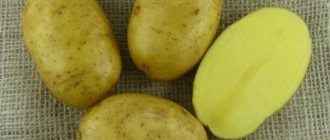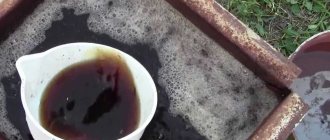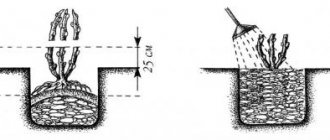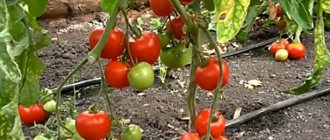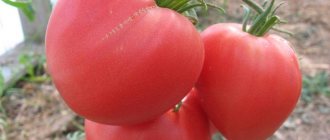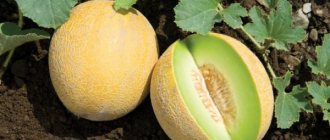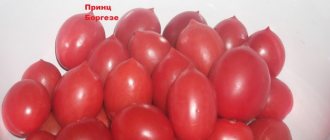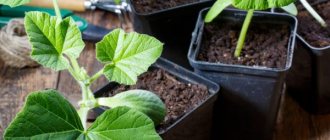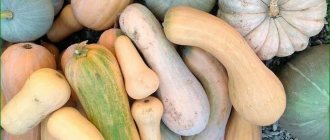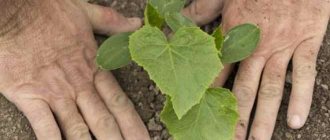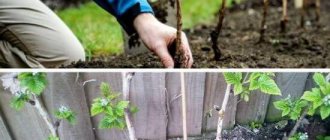Pumpkin Candy belongs to a breeding variety that was developed in Russia for cultivation in non-chernozem zones. Possessing an unusually sweet taste and caramel aroma, pumpkin quickly gained universal recognition. A distinctive feature is the increased amount of sugar, due to which the plant is cultivated for the production of baby food.
Pumpkin Candy has juicy and sweet pulp
Pumpkin Candy is easy to care for
Pumpkin Candy
General characteristics of Candy pumpkin
The candy is divided into subvarieties - the original and the brainchild, designated F1, which indicates the impossibility of collecting seeds at home. The main difference between them is the color of the crust. The first has a bright orange color, the second is grayish. The taste is identical.
The candy has a wide range of applications:
- preparing desserts, sweet cereals and dishes;
- juice production;
- making baby puree;
- cooking first and second courses;
- feeding livestock in livestock farming (due to high yields and unpretentiousness of cultivation).
Pumpkin is so sweet that no sugar is added during production. This allows you to reduce production costs and get more income.
Description of fruits
This is a large-fruited crop with segmented fruits. Contains a large amount of useful substances - vitamins, phosphorus, sodium, magnesium, carotene, ascorbic acid. The sugar content per 100 grams of product reaches 7-8%. In this case, the total calorie content is 22 kcal. The variety is easily transported; when stored under appropriate conditions, the pulp becomes softer and sweeter.
Description of fruits:
- the weight of one pumpkin varies from one and a half to 10 kg, but there is evidence of reaching a weight of up to 50 kg;
- the peel is thick and rough;
- peel color – gray or bright orange;
- surface – plain or with green longitudinal stripes;
- pulp – orange, juicy, soft;
- the seed nest is small in size;
- seeds are large.
Description of the bush
Characteristic features of the bush:
- the length of the main stem and side shoots is 1.5-1.7 m on average;
- one shoot forms 5-8 fruits;
- flowers are large and yellow in color;
- peduncle – elongated;
- The shape of the leaves is heart-shaped, up to 25 cm in size, green in color.
Productivity
The productivity of Candy directly depends on climatic conditions - in the southern regions up to 8 pumpkins are formed on one bush, in the northern regions - 3-5 pieces.
From one bush you can collect from 3 to 50 kg, depending on the climate, weather conditions, region of growth and quality of plant care.
Advantages and disadvantages
Benefits of Sweets:
- high productivity;
- precocity;
- duration of storage period;
- transportability;
- increased sweetness;
- unpretentiousness;
- wide range of uses;
- saturation with useful substances;
- minimum calorie content (can be used for dietary nutrition);
- frost resistance;
- drought tolerance;
- a small seed nest due to which the vegetable contains a lot of pulp;
- possibility of cultivation in all regions of the country and under different climatic conditions.
The disadvantages include the following:
- reduced yield in the absence of light;
- the need for fertilizing;
- susceptibility to diseases.
Description of the variety
Sometimes the variety is called Caramel. It is characterized as a table mid-season. The candy is frost-resistant and high-yielding, which allows it to be grown in any climatic conditions. The plant performs well both in greenhouses and in open ground conditions.
Distinctive features
The bushes are large and powerful, the vines and leaves are green. The variety is grown mainly by seedlings, but sometimes Sweetie is sown directly into the ground. In cold regions, the vegetable is grown under film. It ripens within 120-130 days from planting.
Fruit characteristics and yield
The average weight of one pumpkin is 2-3 kg. The vegetables are round, slightly rough, and have a bright red-orange color. Pale green spots can be seen on the surface of the pumpkin. The peel is soft and easy to cut with a knife. The pulp is sweet and juicy, with a high content of sugar and vitamin C. Productivity is about 9 kg per 1 sq. m.
Features of cultivation
The variety is not too demanding, so even a novice gardener can get sufficient yield. The main thing is to adhere to the rules described below.
Soil preparation
To grow tasty and juicy fruits, you need to choose the right site that meets the requirements of the Sweetie variety. The correct soil composition and structure is the key to stable fruiting.
Requirements:
- The site should have enough sunlight and space.
- The soil can be any, but it is advisable to give preference to light loam.
- Before planting, the soil is dug up to the height of one shovel.
- Organic fertilizer is applied to enrich the soil. Slurry or compost per 1 square meter is suitable for these purposes. m 6-7 kg of feeding.
- If the soil is too depleted, superphosphate and wood ash are additionally added.
- If the soil is fertile, fertilizers are applied mainly to the holes. For one hole you need 1 glass of wood ash and 50 grams of superphosphate.
Seed preparation
Seed material must be prepared for planting in open ground and for seedlings. The methods used are the same. What do we have to do:
- First of all, select hollow elements. This can be done manually or by placing the seeds in water (unusable seeds float to the top).
- Since the variety is susceptible to disease, the seeds are pre-disinfected. You can use a weak solution of potassium permanganate, aloe juice or hydrogen peroxide diluted with water. Keep for 6-7 hours.
- After processing, the seed material is soaked in warm water. To do this, the liquid is heated to a temperature of 45 degrees, seeds are placed in it for a couple of hours. This must be done 3 days before disembarkation.
- After this, transfer the soaked elements into a piece of gauze, which is moistened in water. The material is left in the curing room, dampening the fabric daily.
- When the first shoots appear, the seeds can be transferred to a cooler place, thereby increasing cold resistance. You can keep it this way for up to 2 days.
Planting seeds for seedlings
A variety of containers are used for planting seeds for seedlings - peat or plastic cups, wooden boxes, etc. The main condition is not to damage the root system when transplanting. A drained substrate is placed in the container - soil mixed with peat and sawdust.
Rules:
- seed material for seedlings is planted 21-23 days before transplanting into the garden;
- the grains are placed at a distance of 5/10x5/10 cm from each other;
- seed placement depth is a maximum of 4 cm;
- during planting, lightly water the soil with water at room temperature;
- the container with future seedlings is covered with film and placed on the windowsill, where there is a lot of sunlight;
- after the formation of primary shoots, the cover is removed;
- when 2 or 3 full leaves appear, the seedlings are considered ready for planting.
Planting seeds in the ground
How to properly plant seed directly into the soil:
- the soil temperature should not be lower than 12-13 degrees;
- Most often, planting time occurs in the second half of May;
- in the pumpkin patch you need to make holes that are watered;
- seed material is planted in them with the sharp end down;
- laying depth – 7-8 cm;
- distance between bushes – 90-100 cm;
- distance between rows – 1-2 m;
- 2 to 4 grains should be placed in one hole;
- after emergence, the sprouts are thinned out (exclusively one stem remains);
- When thinning, it is strictly forbidden to pull out the seedlings by the roots, which will damage the root system (excess elements are cut off with scissors).
Watering
The frequency of soil irrigation is determined by weather conditions and climate. To find out whether the pumpkin needs to be watered, just examine the surface of the ground. If dry cracks have formed on it, irrigation is necessary.
The procedure is carried out in the evening. Water should not get on the leaves. Feature - watering stops 7-10 days before harvest. The liquid should not be cold.
Weeding and loosening
Loosening is necessary for sufficient oxygen supply to the root system of the plant. Weeding is needed to remove weeds that feed on nutrients, absorb moisture and spread diseases and insects.
You can loosen and weed the soil only until the rows are closed. That is, until the plant begins to intertwine. If planting occurs in mid-May, then the last loosening is carried out in mid-June. It is better to carry out “procedures” after watering.
Bush formation
Sweetie does not grow as much as other pumpkin varieties. Therefore, there are no special requirements for the formation of a bush. Pruning is necessary in the following cases:
- crooked shoots;
- presence of disease.
Despite this, many experienced gardeners recommend forming a bush, arguing that the yield increases. You need to leave only 2 shoots, pinch their tops at a distance of 70 cm from the stem.
Feeding
Fertilizing for the Sweetie variety is a mandatory procedure. How to fertilize:
- The first time fertilizers are applied 14-15 days after planting seeds or seedlings in the ground. Nitrophoska is used in an amount of 10 grams per plant.
- The second feeding is done during the formation of lashes. Nitrophoska is used again, but the amount is 15 grams.
- During the growing season, chicken manure or mullein is added, diluted with water in a ratio of 1:10. A prerequisite is to thoroughly irrigate the beds before fertilizing.
- During the period of ripening of pumpkins, the plants are watered with liquid manure (1:10 with water). Three bushes require 10 liters.
- Before fruit formation, it is recommended to add ammonium nitrate at the rate of 1 matchbox per 10 liters of water.
Possible difficulties
Quite often, beginners have certain problems that they cannot cope with. To find a solution, you can use the advice of experienced gardeners:
- If the soil composition is very unfavorable, it is necessary to make raised beds. To do this, new soil is brought in, mixed with fertilizers and local soil, and poured directly onto the pumpkin plot.
- It is undesirable to leave a lot of stepsons, as the plant will not have enough sunlight.
- The lashes have the property of entangling, which reduces yield. Therefore, they must be untangled periodically, laid out on the ground in a given direction.
- Pumpkin crops extract moisture and nutrients from the soil through their roots, after which they transfer them to the stems and fruits. To ensure that the plant receives more of these substances, gardeners dig up shoots to form new rhizomes.
- It is advisable to plant candy after beans, potatoes and other root vegetables. You cannot plant if zucchini, cucumbers, and squash grew on the site last year.
- If the crop grows slowly, for example, under unfavorable climatic or weather conditions, growth stimulants can be used. These are drugs such as Mycefit, Zircon, Zdraven, Magic Leika.
- Sweetie is a large-fruited plant, so it is difficult for the main stem to hold the fruit. To make this task easier, you can install a support made of boards next to the bush.
Preparing containers for seedlings
To grow healthy seedlings, you need to fill the selected seeds with water and place them in a warm place, but not in close proximity to a heat source, so that they do not cook. While they are germinating, the pots and soil are prepared.
Cut plastic bottles, thick cardboard boxes, such as dairy products, or disposable cups are suitable as containers for seedlings.
Since the Candy pumpkin has a very delicate root system, in order to avoid injury to it during further replanting, when making containers from plastic bottles, not only the top, but also the bottom is cut off. It is enough to make containers without a bottom 7-8 cm high, fill them with soil mixture and place them on pallets, such as disposable plates. It is easy to replant plants in such containers without damaging them.
Diseases and pests
The most dangerous pests and diseases for Sweetie:
- Powdery mildew. The disease is characterized by a whitish coating on leaves, stems, vines and fruits. You can get rid of it by spraying the affected parts with different solutions:
- copper sulfate in a ratio of 2 grams per bucket of water;
- potassium permanganate – 3 grams per 10 liters of water;
- Bordeaux mixture 1 percent.
- Rot. There are different types - black, gray, root, white. Different parts of the plant are affected. For treatment, specialized drugs are used that correspond to the type of disease.
- Viral mosaic. The ovaries, leaves and fruits are covered with a peculiar mosaic pattern. Treatment is impossible, since eating the infected fruit is prohibited.
- Aphid. The insect settles on leaves, which subsequently wither and curl. It is recommended to spray with Karbofos or soap solution.
- Spider mite. A sign is the presence of cobwebs on the leaves and stem. You can get rid of it using the drug Chloroethanol or onion peel tincture.
An important condition is preventive measures, which include timely weeding, proper proximity, and control of humidity levels.
To protect the plant from fungal and other infections, it is necessary to place dense material under the ovaries - plywood sheet, slate, glass, board.
Description of the variety
Sometimes the variety is called Caramel. It is characterized as a table mid-season. The candy is frost-resistant and high-yielding, which allows it to be grown in any climatic conditions. The plant performs well both in greenhouses and in open ground conditions.
Distinctive features
The bushes are large and powerful, the vines and leaves are green. The variety is grown mainly by seedlings, but sometimes Sweetie is sown directly into the ground. In cold regions, the vegetable is grown under film. It ripens within 120-130 days from planting.
Harvest and storage
Fruits can be collected after ripening, which is determined by the following parameters:
- dryness of leaves and stems;
- coarsening of the stalk;
- surface roughness;
- skin hardness.
Collection and storage rules:
- The fruits must be cut along with the stems (at least 5 cm).
- Before storage, each pumpkin is carefully inspected for damage and disease.
- After harvesting, the fruits are placed in a room for a couple of days to dry, after which they are transferred to a cool room for long-term storage (basement, closet, etc.).
- The average ripening period is 120-150 days.
- Shelf life – 10 months.
- Temperature range – from +3 degrees to +15.
- The humidity level in the room is 70-80%.
How to grow
Pumpkin is a plant that prefers warmth. Therefore, in cool areas it is recommended to grow it through seedlings. To begin with, large, high-quality seeds are selected, wrapped in a piece of moistened cloth and left in a warm place until they hatch.
Next, the already sprouted seeds are hardened, for which they are placed in the refrigerator for 3-5 days.
Growing seedlings
It is recommended to sow seeds for seedlings 22-24 days before the planned planting in a permanent place. During this time, the plants will grow well and become stronger.
Suitable containers are selected and filled with previously prepared nutrient soil.
- If common boxes will be used for seedlings, it is advisable to put a layer of sawdust on the bottom as drainage.
- Seeds are distributed into separate containers of 1-2 pieces. and are buried to a depth of 3-4 cm. Covered with earth and watered a little. When sowing in a common box, a distance of at least 5 cm is required.
Seeds of the Sweetie variety
- The containers are covered with transparent material and left until the sprouts appear, after which the covers are removed.
- Seedlings should be grown in a well-lit, fairly warm room.
- When young pumpkins have 2-3 true leaves and the soil in the garden warms up to 13°C, the plants are planted in the ground in a permanent place.
Planting pumpkins in the garden
Pumpkin Candy prefers places that are well illuminated by the sun, without the slightest shadow. Loams are the best soil to use. The beds for planting pumpkins are prepared in advance. The soil at the selected location is sprinkled with rotted compost or manure and thoroughly shoveled. Grown plants are planted, maintaining an interval of about 1.5 m, in holes filled with warm water.
Advice. On particularly poor soils, before planting seedlings, it is better to pour 2 tbsp of ash and 50 g of superphosphate into each hole.
Gardeners especially highlight the high yield of the variety and the ease of its cultivation. Those who topped the Candy with fermented infusion of mullein or bird droppings several times during the season, and also pinched the stems, received very large fruits. The taste of the pulp and its appetizing color also received high marks.
Pumpkin in the garden
Pumpkin is a very healthy vegetable that can supply the human body with many essential substances. Growing it is not at all troublesome. Even an inexperienced gardener, if desired, can get a lot of large, beautiful, orange Candy variety pumpkins on his plot.
Reviews
★★★★★
Marina Kucherova, 48 years old. I raised Sweetie several times.
A good variety that does not require much care. I especially liked the size of the fruits - I had specimens weighing 15-18 kg. The fact is that the garden at the dacha is small, but I want to plant everything. And so it turned out that a pumpkin with such large fruits takes up less space than if I had planted a medium-fruited variety. ★★★★★
Victor K., 39 years old. I don’t plant Sweetie every year, but only if a hot summer is expected.
I planted this pumpkin one day and it was a very rainy summer. So I didn’t really have a harvest, but I put a lot of effort into it. Therefore, I recommend that those who want to plant Candy first study the forecasts for the summer period. ★★★★★
Elizaveta Nikitovna, 42 years old. I really liked Sweetie, my neighbor at the dacha recommended it to me.
Firstly, it grows without worries, and secondly, the fruits are large. But for me personally, the most important thing is taste. I have many grandchildren for whom I can preserve pumpkin juice, and I just cook it often. After all, how much benefit there is in Candy! So, when cooking and canning, I don’t even add sugar. I also got used to adding a little pumpkin to jam, especially from sour berries. And this significantly saves sugar. And the Sweetie tastes great. Hide
Add your review
The pumpkin variety Candy is considered not very whimsical, but has its disadvantages, which are more than offset by its advantages. If you decide to plant Candy seeds for the first time, be sure to study the information about agrotechnical rules for planting and care. Don’t forget to pay attention to the expiration dates of the seed material, which determines the yield.
0
0
Copy link
Pumpkin candies "Lakomka"
Description of varieties of decorative pumpkin, its cultivation and use
Ingredients:
- Pumpkin pulp - 200 grams;
- butter - 50 grams;
- cookies (you can take any) - 150 grams;
- one orange, 50 grams of walnuts;
- natural honey - three tablespoons;
- coconut flakes - 50 grams;
- cinnamon - optional;
- cognac - 30 grams; if you prepare sweets for children, then do not add alcohol.
Preparation:
- Peel the pumpkin, wash and cut into pieces. Pour them with water in a saucepan and boil until tender so that they are soft.
- Drain all the water from the finished pumpkin, let it cool slightly and puree it using a blender or masher. You can rub the boiled pumpkin through a sieve.
- Grind oatmeal in a coffee grinder to flour. You can use oat bran or oat flour instead of cereal.
- Grind the cookies into fine crumbs. Instead of cookies, you can use waffles, sponge cake, vanilla crackers or regular gingerbread cookies.
- Add the chopped oatmeal to the cooled pumpkin puree and mix everything well. Leave for 30 minutes so that the oatmeal swells and absorbs the pumpkin juice.
- After this, add the cookie crumbs and mix well.
- Then add honey to the candy mass. If you are allergic to honey, you can replace it with condensed milk or maple syrup. You can also use linden honey, as it is hypoallergenic.
- Then add well-softened butter and cognac, which can be replaced with whiskey, rum or gin. If the dessert is being prepared for a children's table, then alcohol must be excluded from the recipe.
- Stir the mixture until smooth and add the crushed walnuts into small pieces.
- Mix everything thoroughly again and add the zest of one orange, grated on a medium grater.
- Mix the candy mass well again and place it in the freezer for half an hour, stirring it every 10 minutes. This is necessary so that the mass hardens so that candies - balls - can be formed from it. If the mixture seems too thick, you can dilute it a little with orange juice.
- Once the candy dough has hardened, form small balls from it and roll them in coconut flakes. Place our dessert on a tray and place it in the refrigerator for one hour.
This dessert will appeal to children and adults, and due to the presence of oatmeal, these sweets can become a complete breakfast for you.
Pumpkin Candy, like all pumpkin crops, is prone to diseases:
- bacteriosis;
- white rot;
- root rot;
- powdery mildew.
They appear mainly during the formation of ovaries and fruits.
Affected plants must be treated with appropriate medications and the basic rule of preventing various diseases - crop rotation - must be observed. For pumpkin it is 3-4 years.
The “Candy” pumpkin variety is susceptible to a number of diseases and is affected by pests.
- spider mite - plantings against it are sprayed with onion infusion. Made from husks (60 g per 100 ml);
- powdery mildew - to combat it, pumpkin is treated with a solution of potassium permanganate (3 g per 10 l) or copper sulfate (2 g per 10 l), at the stage of the disease it is sprayed with Bordeaux mixture with a concentration of 1%;
- melon aphid - to prevent pest attacks, plants are treated with a soap solution (200 g per 10 l) or karbofos (60 g per 10 l);
- fruit rot - in case of disease, the affected areas are removed, followed by treatment of the resulting wound with aloe juice.
Diseases appear mainly at the stage of ovary emergence and fruit formation. The main preventive measure is strict adherence to crop rotation (3-4 years).
